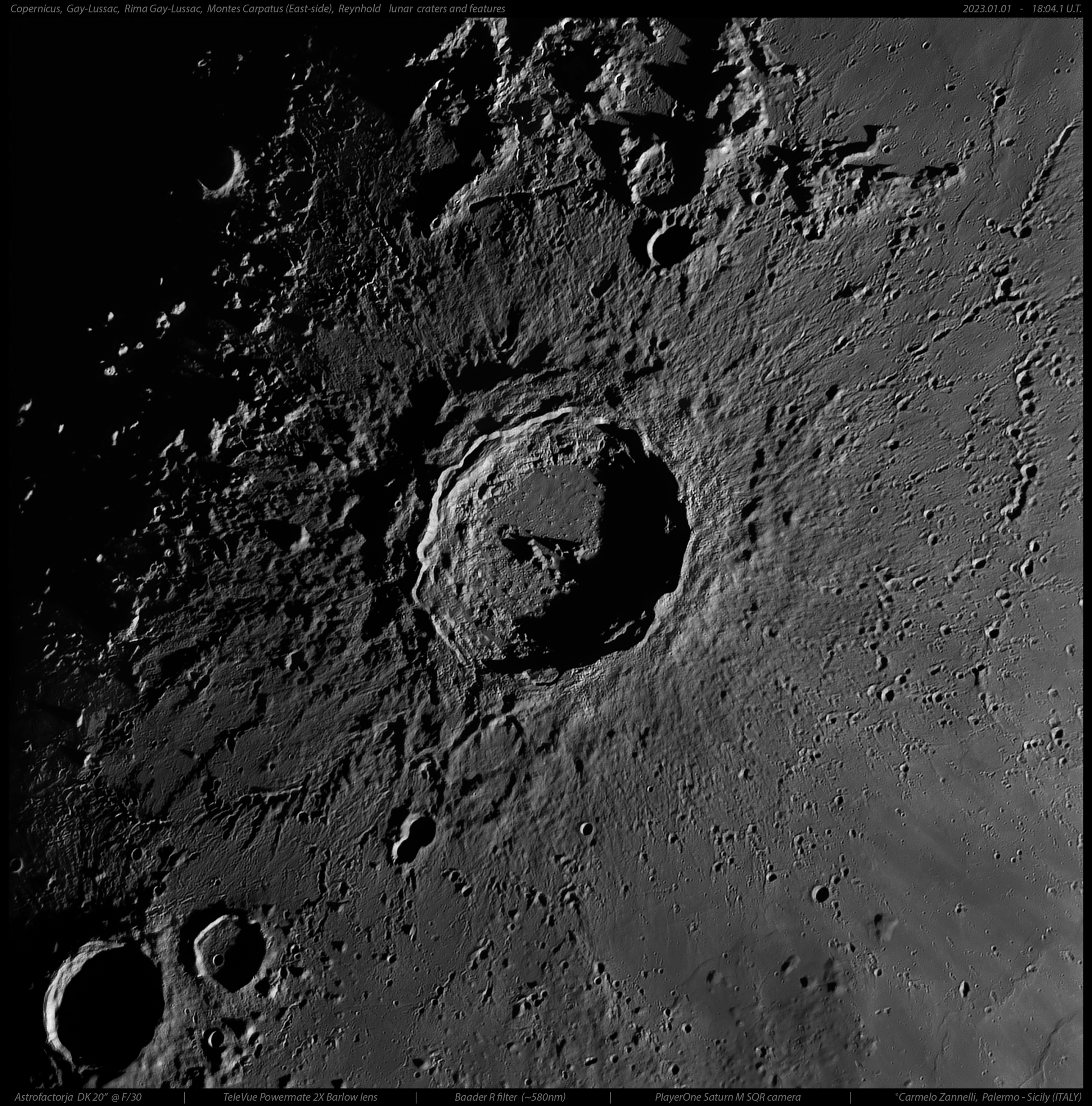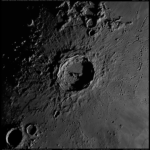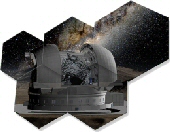Italiano:
Un’altra ripresa del cratere lunare “Copernico” (o Copernicus), di 96,07 km di diametro, situato nella parte nord-occidentale della faccia visibile della Luna, nella porzione orientale dell’Oceanus Procellarum, mette in luce dettagli fino a circa 300 metri di diametro, così come confrontato con la mappatura globale della Luna effettuata dal Lunar Reconnaissance Orbiter (L.R.O.) visibile al link https://quickmap.lroc.asu.edu , che giunge ad una incredibile risoluzione di ben 0,5 metri per pixel.
Come in precedenza già detto, questo cratere è stato dedicato all’astronomo polacco Niccolò Copernico dal gesuita italiano Giovanni Riccioli ed è uno dei crateri più evidenti, visibile anche con un piccolo binocolo, puntando leggermente a nord-est del centro della faccia visibile della Luna.
Ha un’età stimata in 800 milioni di anni, ed individua l’inizio dell’Era Copernicana nell’ambito della scala dei tempi geologici lunari. Per la sua età relativamente recente, Copernico mostra poche tracce di erosione e i dettagli della sua struttura sono affilati e ben marcati, come infatti si evidenzia in questa mia immagine effettuata in luce solare ancora abbastanza radente. Il bordo ha una forma lievemente esagonale con le pendici interne terrazzate mentre le pendici esterne si estendono per una trentina di chilometri nel mare di lava circostante, circa un chilometro più in basso. La grande raggiera di questo cratere si estende fino a ben 800 km nel mare circostante, e in numerose locazioni i raggi piegano ad angolo invece di proseguire diritti.
Dettagli Tecnici:
Telescopio Astrofaktorja DK20″ @ ~ F/27 – Player One Saturn M camera – TeleVue Powermate Barlow 2x – Baader R filter (~580nm) – Seeing ~ 7,5/10 (max.) in R band – sito: Palermo @ my personal Observatory.
*************************************************************************************************************
English:
Another shot of the lunar crater “Copernicus” , 96.07 km in diameter, located in the northwestern part of the visible face of the Moon, in the eastern portion of the Oceanus Procellarum, highlights details up to about 300 meters in diameter, as compared with the global mapping of the Moon carried out by the Lunar Reconnaissance Orbiter (L.R.O.) visible at the link https://quickmap.lroc.asu.edu , which reaches an incredible resolution of 0.5 meters per pixel.
As previously mentioned, this crater was dedicated to the Polish astronomer Nicolaus Copernicus by the Italian Jesuit Giovanni Riccioli and is one of the most obvious craters, visible even with small binoculars, pointing slightly north-east of the center of the visible face of the Moon.
Its age is estimated at 800 million years, and identifies the beginning of the Copernican Era within the lunar geological time scale. Due to its relatively recent age, Copernicus shows few traces of erosion and the details of its structure are sharp and well marked, as in fact can be seen in this image of mine taken in still fairly grazing sunlight. The rim has a slightly hexagonal shape with the inner slopes terraced while the outer slopes extend about thirty kilometers into the surrounding lava sea, about one kilometer below. The large radial pattern of this crater extends as far as 800 km into the surrounding sea, and in many locations the rays bend at an angle instead of going straight.
Technical Details: Telescope Astrofaktorja DK20″ @ ~ F/27 – Player One Saturn M camera – TeleVue Powermate Barlow 2x – Baader R filter (~580nm)– Seeing ~ 7,5/10 (max.) in R band – site: Palermo @my personal Observatory.


